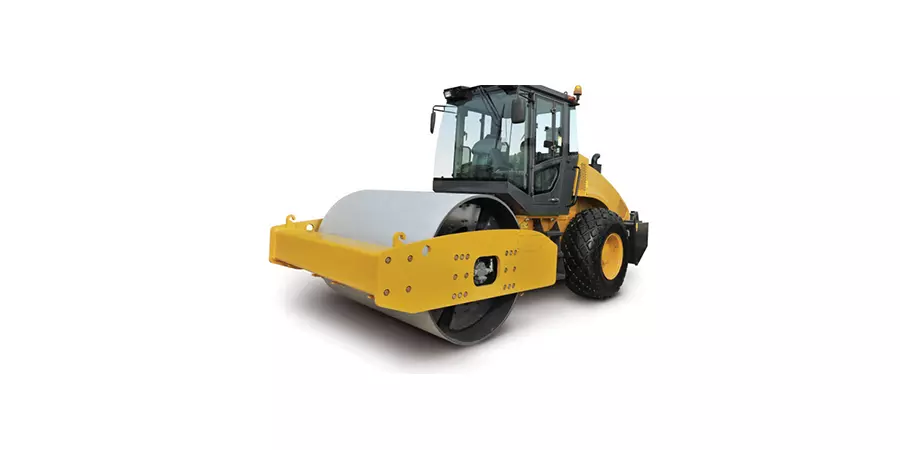Markets

Road rollers rely on robust hydraulic systems to deliver power, precision, and durability in demanding construction environments. Below is a detailed, user-focused breakdown of the hydraulic components used in road rollers, emphasizing practicality, reliability, and ease of operation.
1. Hydraulic Pumps
Function: Convert engine power into hydraulic energy to drive motors and actuators.
Key Types:
Axial Piston Pumps (Most Common):
Why They’re Used: High efficiency (up to 98%) and pressure handling (350–450 bar).
User Benefits:
Variable displacement adjusts flow to match workload, saving fuel.
Quiet operation reduces operator fatigue.
Gear Pumps:
Role: Support auxiliary systems (e.g., cooling fans) with lower pressure (up to 250 bar).
Practical Tips:
Monitor pump noise—grinding or whining may indicate cavitation or wear.
Use ISO VG 46/68 hydraulic oil for optimal performance.
2. Hydraulic Motors
Function: Generate torque for propulsion and vibration.
Key Types:
Axial Piston Motors:
Application: Drive vibratory drums (1,500–3,000 vibrations per minute).
User Benefits: Smooth speed control ensures consistent compaction.
Radial Piston Motors:
Application: Power wheel propulsion, especially on slopes (up to 30% incline).
User Benefits: High torque at low speeds for better traction.
Reliability Features:
Hardened gears and bearings resist wear in dusty conditions.
Built-in pressure relief valves prevent overload damage.
3. Hydraulic Cylinders
Function: Control steering, drum pressure, and blade adjustments.
Critical Applications:
Steering Cylinders:
Design: Double-acting cylinders with chrome-plated rods (ISO 6020 compliant).
User Benefit: Effortless steering even in tight spaces.
Drum Lift Cylinders:
Design: Precision control for adjusting drum weight (e.g., asphalt vs. gravel).
User Benefit: Prevents over-compaction or material sticking.
Practical Tips:
Inspect rod seals weekly for leaks.
Lubricate rods to extend seal life.
4. Control Valves
Function: Regulate hydraulic flow and pressure.
Key Types:
Proportional Valves:
Role: Electronically adjust vibration frequency and drum speed.
User Benefit: One-touch settings for different materials (e.g., soil, asphalt).
Directional Valves:
Role: Manage forward/reverse movement and steering.
User Benefit: Smooth joystick operation reduces operator effort.
Safety Feature:
Pressure relief valves (set to 110% of system max) protect against overloads.
5. Hydraulic Hoses & Fittings
Function: Transport fluid between components.
Key Features:
Steel-Braided Hoses (SAE 100R16/17 standards):
User Benefit: Burst-resistant design (4:1 safety factor) for rugged terrains.
Quick-Disconnect Couplings:
User Benefit: Minimize fluid loss during maintenance.
Practical Tips:
Replace hoses every 5 years or if cracks/abrasions appear.
Color-code hoses (e.g., red for pressure lines) to avoid installation errors.
6. Filtration Systems
Function: Keep hydraulic fluid clean to prevent component damage.
Key Components:
Suction Filters: Block debris before it enters the pump (25-micron rating).
Return Line Filters: Capture particles before fluid re-enters the reservoir.
User-Centric Design:
Visual clogging indicators alert operators to replace filters.
Magnetic filters trap metal particles from gear wear.
Maintenance: Replace filters every 500 hours or as per OEM guidelines.
7. Hydraulic Accumulators
Function: Store energy, dampen shocks, and provide emergency backup.
Key Type:
Bladder Accumulators:
Role: Stabilize pressure during vibration and allow emergency steering if the pump fails.
User Benefit: Smoother operation and enhanced safety.
Safety Check: Test pre-charge pressure annually (90% of system pressure).
8. Cooling Systems
Function: Maintain optimal oil temperature (40–80°C).
Types:
Air-Cooled Radiators: Ideal for most environments.
Oil-to-Water Coolers: Better for high-heat regions.
Practical Tip: Clean radiator fins daily in dusty conditions to prevent overheating.
User-Centered Innovations
Smart Hydraulics:
IoT sensors monitor oil contamination and component health, sending alerts to operators’ devices.
Closed-Loop Systems:
Recycle energy during braking or deceleration, cutting fuel use by 15–20%.
Ergonomic Controls:
Adjustable joysticks with haptic feedback reduce operator strain during long shifts.
Why Reliability Matters
ISO/SAE Compliance: Components adhere to global standards (e.g., ISO 4406 for fluid cleanliness).
Durability in Harsh Conditions: Seals and hoses are UV- and abrasion-resistant.
Proven OEM Designs: Brands like Caterpillar, Bomag, and Dynapac use these systems.
Maintenance Checklist for Operators
Daily:
Check hoses for leaks.
Monitor fluid levels and temperature.
Weekly:
Inspect hydraulic rods and seals.
Clean radiators and filters.
Annually:
Flush hydraulic fluid and replace filters.
Test accumulator pre-charge pressure.
Conclusion
Hydraulic systems are the backbone of road rollers, combining power and precision to tackle tasks like asphalt compaction and soil stabilization. By focusing on user-friendly features—such as joystick controls, quick-disconnect hoses, and smart diagnostics—modern designs prioritize operator comfort and equipment longevity. Regular maintenance, aligned with OEM guidelines, ensures these systems remain reliable in even the toughest job sites.
